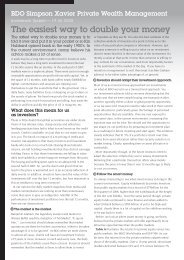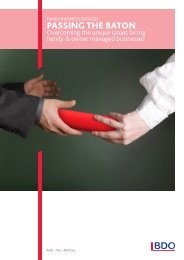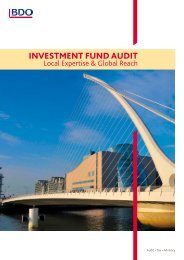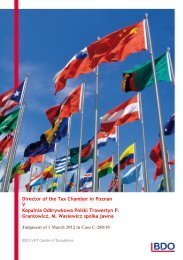need to know / leases - project update - BDO International
need to know / leases - project update - BDO International
need to know / leases - project update - BDO International
Create successful ePaper yourself
Turn your PDF publications into a flip-book with our unique Google optimized e-Paper software.
18 LEASES - A PROJECT UPDATE<br />
A lessor would apply the guidance in IAS 39 Financial Instruments: Recognition and Measurement, <strong>to</strong> assess whether the<br />
lease receivable is impaired.<br />
Changes in lease payments that are due <strong>to</strong> a reassessment in the lease term would result in an adjustment being made <strong>to</strong><br />
the receivable and <strong>to</strong> any residual asset, the combined effect of which would be recognised in profit or loss.<br />
<strong>BDO</strong> comment<br />
The receivable and residual approach would be the most complex of the models <strong>to</strong> be applied, and there are certain aspects<br />
that may be controversial. For example, the accounting <strong>to</strong> be applied for the residual asset retained by the lessor is not simply <strong>to</strong><br />
maintain the retained portion of the book value during the lease term, subject <strong>to</strong> impairment. Instead, the calculation is based<br />
on the following steps:<br />
1. The expected residual value of the portion of the leased asset that has been retained by the lessor is calculated. This is based<br />
on the fair value of the asset at the commencement of the lease (in the example above this is CU4,040, a CU200 increase in<br />
comparison with the existing depreciated cost of CU3,840).<br />
2. The expected residual value is then discounted back for the lease term, using the interest rate that the lessor charges the<br />
lessee. This gives the present value of the residual asset at the commencement of the lease (in the example above this is<br />
CU2,167). This amount will not appear in the lessor’s statement of financial position, instead representing a ‘memo’ amount<br />
that is required for the purposes of the overall calculation.<br />
3. The difference between the present value of the residual asset and the existing depreciated cost that has been raecorded<br />
by the lessor is established. This difference is equal <strong>to</strong> the amount of the fair value increase (in this example, CU200) that<br />
relates <strong>to</strong> the residual asset that has not been disposed of by the lessor (in this example, CU107). The reason for this approach<br />
is <strong>to</strong> ensure that the lessor does not recognise any profit in respect of the residual asset that has not been disposed of, instead<br />
only recognising profit of the amount of the asset that relates <strong>to</strong> the lease term (in this example CU93). The operation of the<br />
calculation means that the <strong>to</strong>tal of the profit relating <strong>to</strong> the two components of the leased asset that are disposed of and<br />
retained (CU93 and CU107) will always equal the difference between the fair value and existing book value of the asset at<br />
the lease commencement date (CU200).<br />
4. The accretion of the revalued residual asset (step 2 above) is then added each period <strong>to</strong> the carrying amount of the<br />
recognised residual asset (in the example above, this is CU2,060 at commencement of the lease). The difference between<br />
the ‘gross’ and ‘net’ residual asset (in the example above, CU107 which is the fair value uplift that relates the portion of the<br />
asset that is not covered by the lease), remains the same throughout the lease term.<br />
It does not initially seem clear why the residual asset recognised by the lessor is accreted each year using the amount that is<br />
calculated on the basis of the revalued amount of the asset. However, the approach appears consistent with the ‘whole asset’<br />
approach that is required <strong>to</strong> be applied for the purposes of sale and leaseback transactions. The overall approach would seem<br />
<strong>to</strong> be that the whole of the leased asset is derecognised, with the retained portion then being recognised at the discounted<br />
amount of its expected depreciated fair value at the end of the lease. This amount is then reduced <strong>to</strong> the extent of the portion<br />
of the difference between the existing carrying amount of the leased asset, and its fair value, at the commencement date of the<br />
lease that relates <strong>to</strong> the residual asset that the lessor has retained.<br />
Although, from a conceptual perspective, this would seem largely <strong>to</strong> be an appropriate approach it is complex. Some might also<br />
question why the recognised (net) residual asset is accreted using amounts calculated on the basis of the revalued amount of the<br />
asset. This is because a portion of the accretion then represents part of the revaluation (because the accretion is based on the<br />
revalued amount and not the lower existing carrying amount). Under the <strong>leases</strong> proposals, this would be recognised in profit or<br />
loss as finance income, but under IAS 16 any revaluation credit would be recorded in Other Comprehensive Income. Others may<br />
have concerns about the accretion of a non-financial asset, as accretion is normally applied only <strong>to</strong> financial assets and liabilities.<br />
It might be suggested that a more straightforward approach would be <strong>to</strong> measure the residual asset on the same basis as it<br />
was measured before the commencement date of the lease (that is, for the example above, depreciated cost meaning that<br />
the lessor would measure the residual asset at CU2,060 throughout the lease term (unless it was impaired). This approach<br />
might also simplify the accounting for leased assets that have previously been revalued, with amounts recorded in Other<br />
Comprehensive Income, as it would appear that under the IASB’s proposed model there would be a further adjustment <strong>to</strong><br />
reallocate a proportion of the gain recorded in OCI. It will be interesting <strong>to</strong> see comments received by the Boards, and their<br />
associated redeliberations once the comment period has closed.


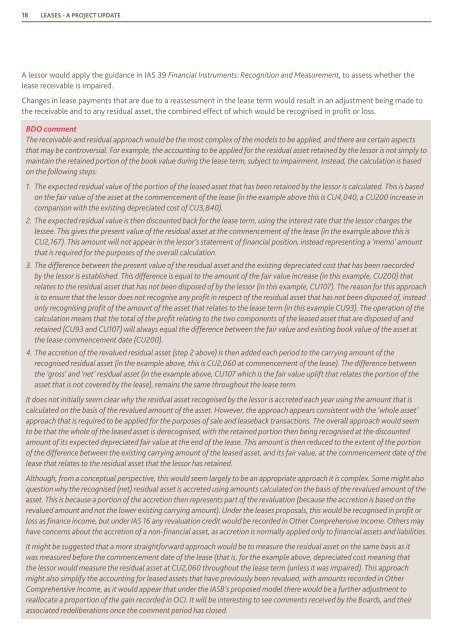

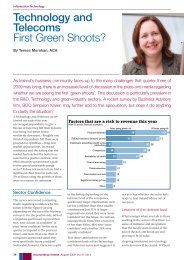



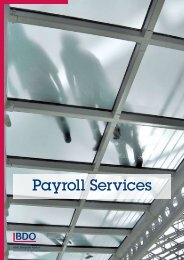
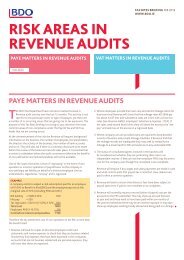
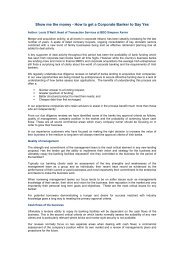
![eii 2013 a5 2pp flyer [web].pdf - BDO](https://img.yumpu.com/39595753/1/184x260/eii-2013-a5-2pp-flyer-webpdf-bdo.jpg?quality=85)
